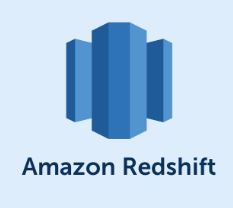In this article, we’ll dive into the distinctions between dynamic and static partitioning in Hive, providing detailed examples and insights to help you choose the right approach for your data management needs.
Dynamic Partitioning: Automated data organization
Dynamic partitioning is a mechanism in Hive that automates the process of creating and managing partitions based on specific column values within a table. It offers the following characteristics:
- Automatic partition creation: Dynamic partitioning automatically generates partitions based on specified column values, eliminating the need for manual partition creation.
- Query performance: It enhances query performance by efficiently pruning partitions during query execution, reducing the amount of data that needs to be scanned.
- Flexibility: Dynamic partitioning adapts to evolving data, allowing for changes in data schema and partition values over time.
Example: Dynamic partitioning
Imagine a sales dataset with transactions from different years and months. Dynamic partitioning can be used to create partitions for each year and month automatically. Here’s how you would do it:
-- Enable dynamic partitioning
SET hive.exec.dynamic.partition = true;
SET hive.exec.dynamic.partition.mode = nonstrict;
-- Insert data into dynamically partitioned table
INSERT OVERWRITE TABLE sales_dynamic PARTITION (year, month)
SELECT
transaction_id,
product_name,
sale_amount,
year,
month
FROM sales_data;
Static Partitioning: Manual data organization
Static partitioning, on the other hand, requires you to explicitly specify partition values during table creation or data insertion. It offers the following characteristics:
- Precise data organization: You have precise control over how data is organized into partitions, allowing you to define partition values explicitly.
- Data archiving: Static partitioning is suitable for archiving historical data or segregating data into well-defined categories.
- Query efficiency: It ensures efficient data retrieval for structured datasets, as you can optimize partition design based on query patterns.
Example: Static partitioning
In a static partitioning scenario, consider organizing a sales dataset by year and month manually:
-- Create a table with static partitions
CREATE TABLE sales_static (
transaction_id INT,
product_name STRING,
sale_amount DECIMAL
)
PARTITIONED BY (year INT, month INT)
ROW FORMAT DELIMITED
FIELDS TERMINATED BY ','
STORED AS TEXTFILE;
-- Insert data into static partitions
INSERT OVERWRITE TABLE sales_static PARTITION (year=2023, month=11)
SELECT
transaction_id,
product_name,
sale_amount
FROM sales_data;
Choosing the right strategy
When deciding between dynamic and static partitioning in Hive, consider the following factors:
- Data complexity: Dynamic partitioning is suitable for rapidly changing or unstructured data, while static partitioning works well for structured and stable datasets.
- Query patterns: Analyze your query patterns; if they involve frequent filtering on specific columns, dynamic partitioning can offer query performance benefits.
- Data evolution: Consider whether your data schema or partitioning requirements are likely to change over time; dynamic partitioning is more flexible in this regard.
- Storage efficiency: Static partitioning can be more storage-efficient for well-structured data, as you have full control over partition design.
Hive important pages to refer









